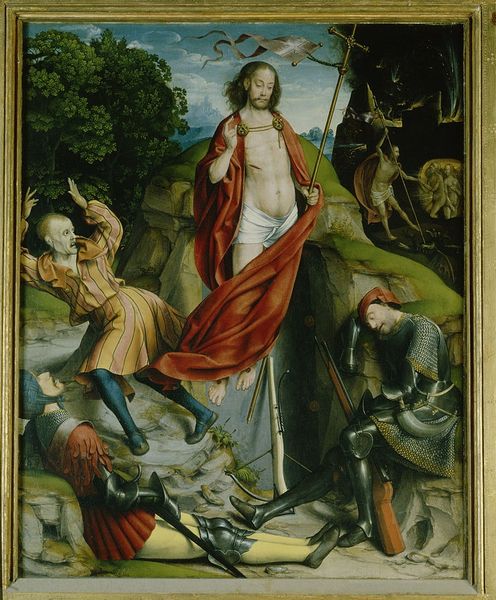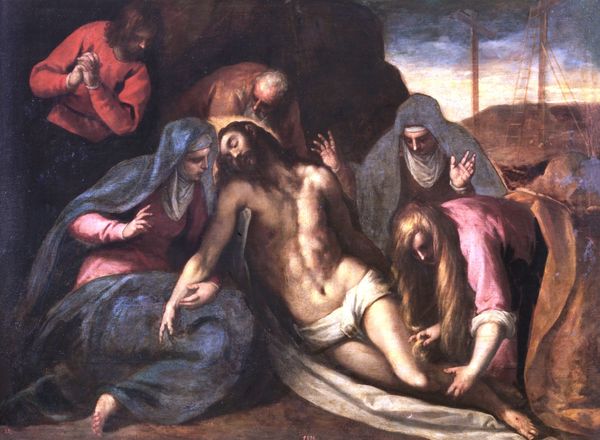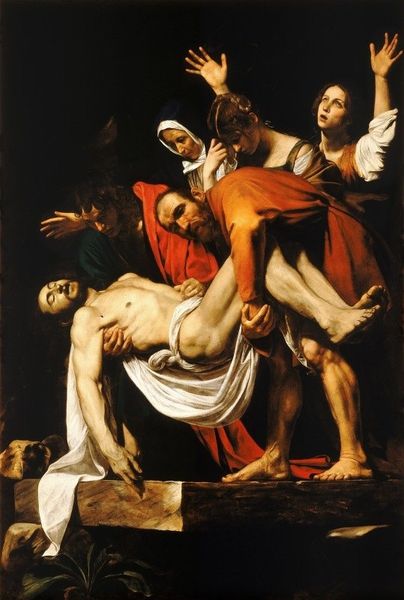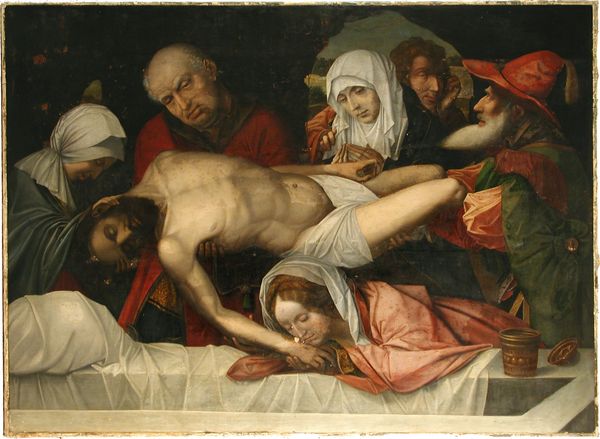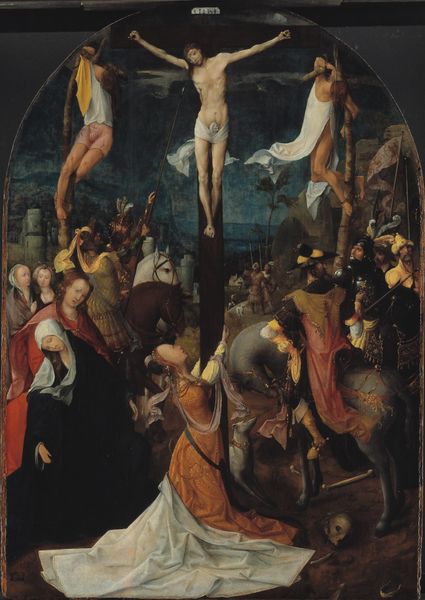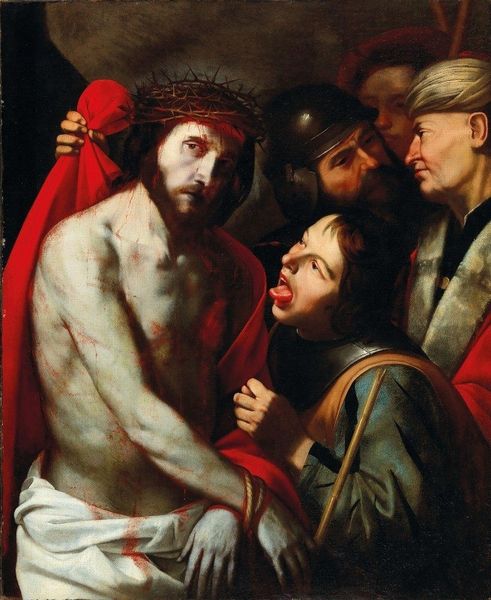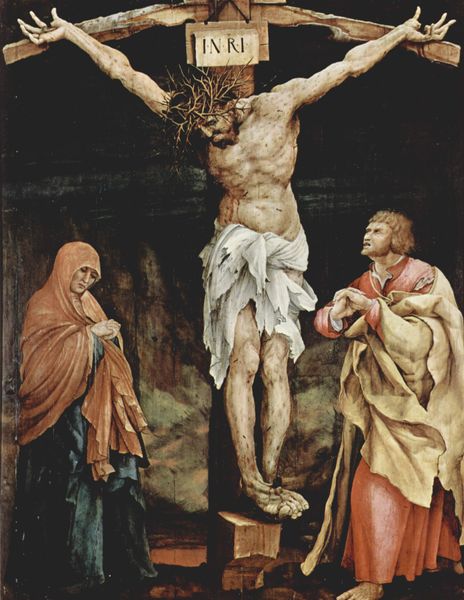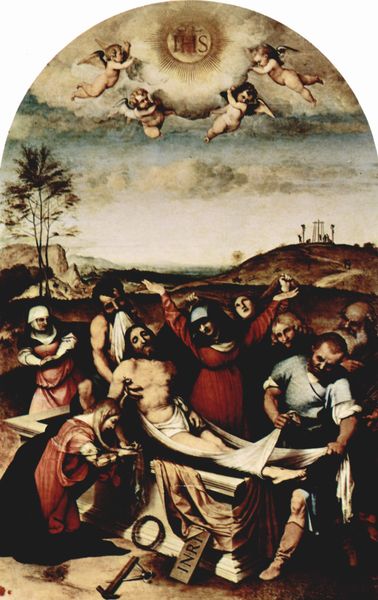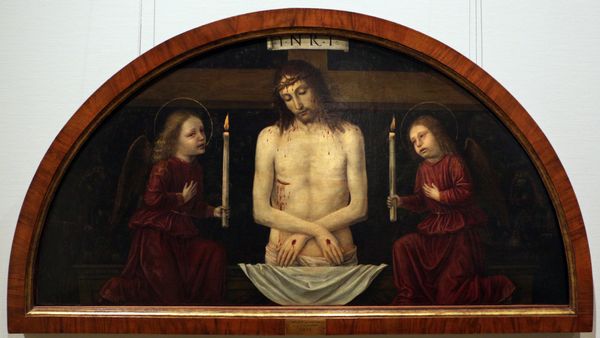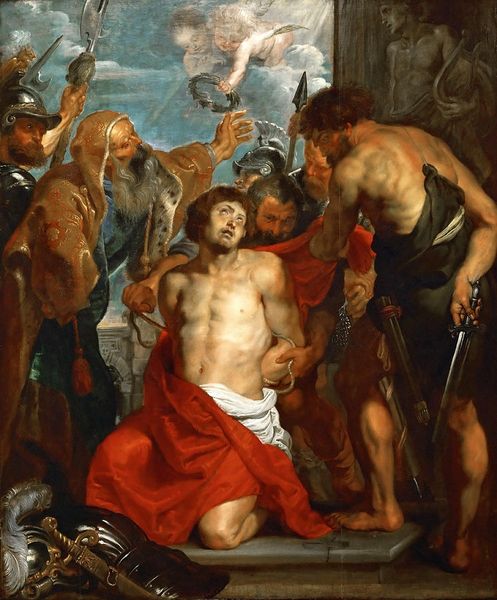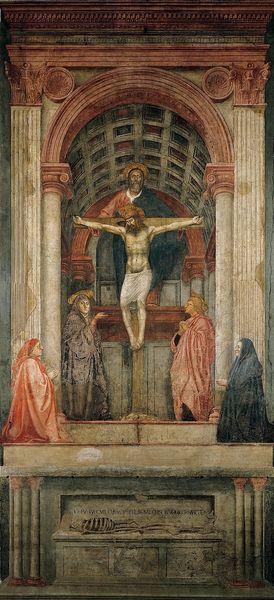
painting, oil-paint
#
narrative-art
#
painting
#
oil-paint
#
landscape
#
figuration
#
jesus-christ
#
christianity
#
history-painting
#
italian-renaissance
Dimensions: 89 x 72.5 cm
Copyright: Public domain
Curator: Dirk Bouts’s “Resurrection,” completed around 1455, presents a fresh vision of this pivotal moment from the Gospels. What are your first thoughts? Editor: It strikes me as surprisingly serene. The pastel sky, the orderly rows of distant trees, and even Christ's composed demeanor feel more aligned with contemplative reflection than triumph over death. Curator: Exactly. Consider the historical context. Resurrection imagery had evolved. Here, Christ isn't bursting forth but serenely stepping out. The figures embody an unfolding recognition of divine power. The angel at the tomb doesn’t startle so much as it calmly explains. Editor: The figure of Christ presents some fascinating oppositions in terms of classical forms. I am interested in Bouts' understanding of how the material surface of his composition would influence and communicate spiritual themes. Did this departure reflect a theological shift? Curator: Indeed. Bouts infuses humanism within religious orthodoxy, focusing less on drama and more on Christ's embodiment as the Logos made flesh. Look how the sleeping soldier mirrors traditional depictions of Adam in representations of the Harrowing of Hell—asleep until divine illumination. Editor: The composition uses diagonals to create implied visual vectors toward the landscape behind. Do these sightlines establish narrative relations or communicate a perspectival structure beyond that of orthogonal organization of objects on the picture plane? Curator: Interesting. I believe it emphasizes the cosmic implications of the resurrection extending beyond earthly understanding. He’s carefully considered both the temporal and eternal ramifications. That cross is planted in earthly soil, yes, but is also raised against an expansive backdrop of cosmic wonder. Editor: So the landscape element represents what, exactly, in the context of Bouts’ historical moment? Curator: A representation of a harmonious order where redemption is now made available to all humanity. Editor: "Resurrection" presents an unexpectedly contemplative space in art history. Curator: Its measured quietude leaves space for pondering themes that remain very pertinent in our contemporary moment.
Comments
No comments
Be the first to comment and join the conversation on the ultimate creative platform.

